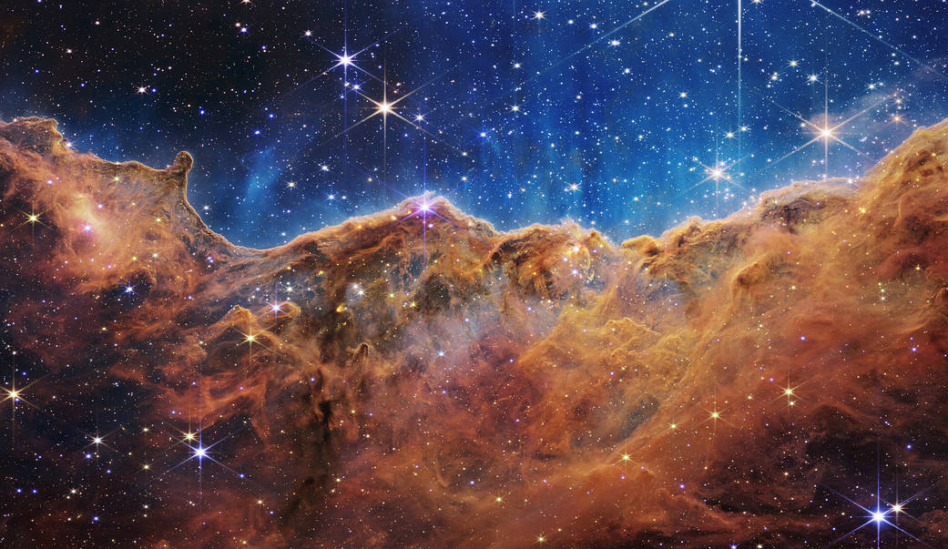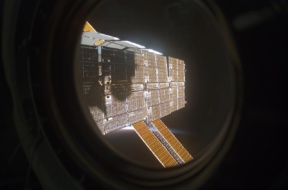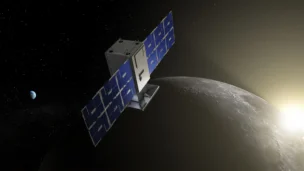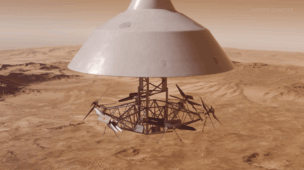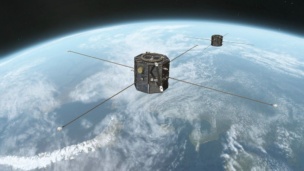Here we are, in the final weeks of 2022, having learned so much about the vast, mysterious universe we live in. Here’s a recap of some of the biggest moments in space science this year.
Eyes on the sky
Last Christmas, NASA launched the James Webb Space Telescope in its mission to, as the agency so eloquently puts it, “unfold the universe.” The telescope took 20 years and $10B to build, and astronomers collectively held their breaths for months as the huge, delicate instrument traveled one million miles to its orbit at Lagrange point 2 and unfolded its iconic golden mirrors.
A year later, the space telescope has proven it’s worth its weight in gold.
JWST’s first images were released in June, giving us our deepest glimpse yet into the history of the universe. Since then, it seems like an endless string of images and scientific findings have been coming from the telescope, giving us insight into exoplanets, distant stars and galaxies, and the planets in our own backyard (aka solar system).

Asteroid smash
2022 shall hereby be remembered as the year humanity made its first strike on another celestial body. The Direct Asteroid Redirection Test, or DART, mission launched in late 2021 and began its 10-month-long journey to the asteroid Dimorphos. On September 26, the world watched as the four-foot-wide spacecraft livestreamed its bullseye impact on the asteroid at 14,000 miles per hour, knocking it just slightly off its orbit around the larger asteroid Didymos.
Earth was never in danger of being struck by Dimorphos. Rather, the mission was intended to test whether a direct kinetic impact on an asteroid could be an effective way to defend our pale blue dot from any potential incoming asteroid that may cross our path. The answer, tentatively, was yes. It’s a win for planetary defense, and—just as important—justice on behalf of the dinosaurs.
Artemis, of course
On November 16, NASA launched the first mission in its program to return humans—including the first woman and person of color—to the lunar surface. Artemis I began with a flawless, if delayed, liftoff of the agency’s SLS rocket, which deposited the Orion capsule squarely on the correct trajectory around the Moon.
Orion traveled farther than any human-rated spacecraft has gone before, performed two flybys within around 80 miles of the lunar surface, and safely splashed down in the Pacific Ocean 26 days after launch. Now, NASA has its hands full preparing for the suite of missions left in the Artemis program.

+ While we’re here: NASA is far from the only organization plotting missions to the Moon. In the coming years, piles of lunar landers and rovers are slated for launch. Japanese startup ispace recently launched its HAKUTO-R lunar lander and Rashid, a small UAE-built rover, to the Moon, where it should land in a few months. Intuitive Machines and Astrobotic, two US-based companies, also have landers ready to launch next month. And as I write this, eight spacecraft are in orbit around the Moon, taking all sorts of measurements. We’ve got an exciting year in store for lunar science.
Best of the rest
🔥 Venus had a moment. A few years ago, astronomers claimed to have discovered phosphine—a potential marker of life—high in the clouds of Earth’s evil twin. NASA recently released its own research stating that they could not replicate those findings and that large amounts of phosphine are unlikely, but the initial finding had already made its mark. NASA, ESA, Roscosmos, and ISRO have all announced missions to Venus in the coming decade, and I, for one, have my eye on a Rocket Lab mission that could visit the planet in 2023.
⚛️ Einstein was right, again. Earlier this year, scientists directly observed for the first time a phenomenon that the famed scientist first laid out in his theory of general relativity. Researchers at Cardiff University found two black holes precessing—or wobbling—in their orbit around one another. The newfound ability to measure gravitational waves has paved the way for more observations like this.
🙏 Rest in peace. Let’s take a moment for the contributors to science that took their last bows this year. Goodbye to the Arecibo Observatory, which will officially be shut down rather than restored after its collapse in 2020. Goodbye to SOFIA, or the Stratospheric Observatory for Infrared Astronomy, which took its final flight earlier this month. And lastly, goodbye to the InSight lander, which sent its last transmission home from Mars on Dec. 15.
